Your feelings about Ghostbusters: Afterlife will hinge on your relationship to nostalgia. More specifically, how you feel nostalgia has shaped the entertainment of the last several years, and what you’d like to see in the future; maybe even the stories you’re working on and would like to tell.
Afterlife leans so heavy on the first Ghostbusters for its story beats, images, and gags. Many lines are taken straight from the 1984 original; they even recreate several (dozens of?) scenes. These references are meant to conjure warm memories from my youth, but I was way more interested when the movie started doing its own thing that wasn’t just a reiteration of Ghostbusters (1984). Yet the movie plays less like a greatest hits album, more like an uninspired cover.
Nostalgia has its uses, but when it’s so cynically deployed as it is in this film, it feels life-sapping, limiting; something like a trap.
[Major Spoilers for Ghostbusters: Afterlife Below]
There are only two stories: 1) a person goes on a journey, and 2) a stranger comes to town.
Phoebe (McKenna Grace) and her family lose their home and move into her recently deceased grandfather’s rotting farmhouse. The locals of Summerville, Oklahoma take a shine to these newcomers, including reluctant summer school teacher/brilliant seismologist Gary (Paul Rudd). Turns out Phoebe’s grandfather was the Ghostbuster Egon Spengler, and he had some unfinished business with some specters in the vicinity.
In Afterlife, no one seems to remember the Ghostbusters saved the world. Twice. Apparently that one time a kaiju vandalized a church in NYC was just a blip in the local crime blotter. Ditto that night the Statue of Liberty was brought to life with slime and a Jackie Wilson tune. Those who do not remember the past…
A lot of this essay is negative, but I have nothing but good things to say about Phoebe Spengler. She is such an endearing character in the mold of precocious-kid protagonists of eras past. Yet she doesn’t feel like a complete throwback like so many other elements in Afterlife. Phoebe’s sense of newness comes from Grace’s earnest performance; such an undeniable bright spot in this film. I even liked Podcast (Logan Kim), Phoebe’s classmate who chronicles the supernatural goings-on in town. I do wonder why Podcast is only recording audio when he could also be taking video and posting it on YouTube or TikTok (Podcast, you need to build that brand).
The Ghostbusters of Afterlife are bit Goonies-adjacent: kids with their own talents and personalities who band together and have an adventure. There’s Phoebe, the brains of the operation (and the heart and soul). There’s Podcast who podcasts. There’s Trevor (Finn Wolfhard) who… he… he is the brother of Phoebe and… he is also that guy from Stranger Things. And there’s Lucky (Celeste O’Connor) who… she… she’s a girl Trevor likes.
Okay, so there are just two defined characters in this group of misfits. Maybe that’s a sign that the script’s priorities are elsewhere, namely packing the movie with references to the original Ghostbusters.
There are only two stories: 1) an original story, and 2) our excessive reverence for that story.
It’s a shame that Phoebe and her crew have to rehash the same old story from almost 40 years ago rather than getting to have their own. Don’t get me wrong, Ghostbusters (1984) is good, but as much as I enjoy that movie, I’m baffled by its cultural elevation into a kind of VHS/basic cable Woodstock. The reverence in Afterlife is excessive. Lensed with almost perpetual Spielbergian wonder, the movie feels awestruck by itself simply for being a Ghostbusters movie. There are even scenes in Afterlife that literally involve characters watching clips from Ghostbusters on YouTube.
That reverence has a history. Every Ghostbusters film since Ghostbusters II is essentially a retread of the plot or ideas from the original Ghostbusters. Even 2016’s Ghostbusters: Answer the Call, for all its irreverence, seemed unable to fully bust out of the template set by the original film. (More on Answer the Call in a bit, too.) It’s as if Ghostbusters has possessed its cinematic progeny; there is no Ghostbusters, only Ghostbusters, and the chosen form of Gozer the Destructor is Ghostbusters.
Each Ghostbusters movie after the first one feels diminished because of an obligation (probably studio mandated) to hew closely to a formula. In Afterlife, there are hints of a charming children’s adventure, but it’s straightjacketed by the fetishization of nostalgia in the form of fan-service and lazy references.
There are only two stories: 1) playing make believe, and 2) playing “I understood that reference.”
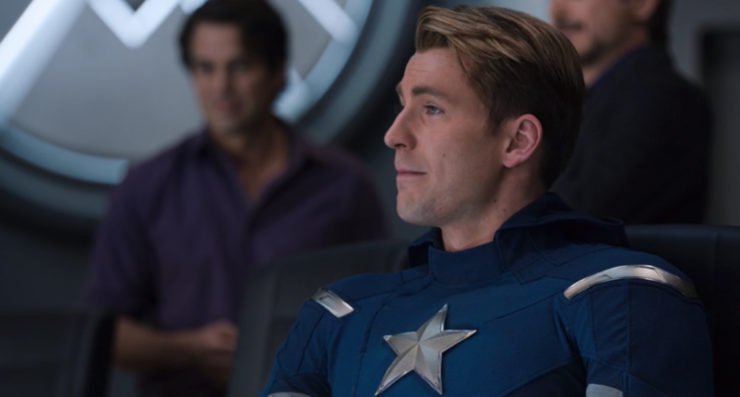
I played Ghostbusters with my younger brother when we were kids, and while I can’t remember specifics, I’m pretty certain we didn’t just repeat the plot from Ghostbusters. There were other ghosts to bust, and new tech to ensnare ghouls. Whatever got imprinted on our brains from the entertainment we consumed could be remade and reformed and turned into something new through the use of our imaginations.
Whenever Afterlife feels like it’s playing Ghostbusters in the way children play make believe, it feels exhilarating. Those moments are scant, but they’re there. One of the highlights is when Phoebe, Podcast, and Phoebe’s brother chase after an apparition through Summerville. A repaired Ecto-1 speeds through the sleepy town, drifting through the empty streets in hot pursuit of a Great Value Slimer. Phoebe fires destructive ropes of proton from a lever-action gunner seat, decimating retro boomer architecture in a dazzle of laser light. Meanwhile, Podcast zips a remote controlled trap in and around the cracked white wall tires of the squealing hearse. It feels reckless, it feels dangerous, it feels like play. Even Rob Simonsen’s score loosens up with its reticulations of Elmer Bernstein’s original Ghostbusters arrangements.
After that joyous bit of play, the kids are arrested and taken to jail. Phoebe asks the sheriff if she at least gets a phone call. The camera moves in purposefully as the sheriff asks, “Who you gonna call?” It’s one of the cringiest of many cringey callbacks in the film.
If you like references, Afterlife is chockablock with bric-a-brac: Twinkies, symmetrical book stackings, and Louis Tully’s helmet. Characters say a bunch of familiar lines, and they tell a lot of the same jokes, and they even wind up doing the exact same things they did decades ago. While I’m okay with a few nods to the past, the constant callbacks took me out of the moment, making Afterlife feel less like a new story and more like an Easter egg dispenser. It’s the same way I felt about Ready Player One, a movie whose trailer featured a boisterous rendition of “Pure Imagination” but seemed to lack any of its own.
Maybe it’s just the aging grouch in me. Whenever the pop culture of my youth is thrown back at me so blatantly, it feels like the work pauses to scream, “Hey, do you remember this? Did you get that reference?”
Yes, yes, and I don’t care.
There are only two stories: 1) Blockbuster Video and 2) Hollywood Video.
There’s a lot of Force Awakens and Stranger Things energy in Ghostbusters: Afterlife. Phoebe has a little bit of Rey’s plucky determination (and a family legacy), and director/co-writer Jason Reitman seemed to take notes on J.J. Abrams’ Amblin-esque sheen when recreating the plot of a franchise first entry. Stranger Things is maybe the biggest nostalgia flashpoint of recent vintage. Afterlife tires to harness some of its popularity and existing audience, even featuring Wolfhard prominently in promotional materials even though this is very much McKenna Grace’s film.
Afterlife, Stranger Things, and multiple Abrams works are fueled by the cultural memory of the video store. The common ground here (in addition to Ghostbusters) is all the misfit kid movies of the 1980s, like Explorers, Goonies, or Monster Squad. And older scientific mentors like Gary are basically Doc Browns making scale models (with a little Mr. Shoop from Summer School; Gary shows Cujo to the kids in class). All life in Summerville, all lives in Afterlife, are filtered through a VCR and CRT television, a return to childhood not for recent adults but for the Gen-X’ers and elderly millennials who will take their children to this movie.
I was struck by two other driving scenes in Afterlife. In one, older teens cruise in vintage cars during sunset, all laughs and smiles while vibing to Funkadelic. In the other, the repaired Ecto-1 shreds through wheat and tall grass to the snarl of the Buzzcocks. That’s two old needle drops instead of anything a teenager might listen to today. I’m not saying that today’s teens don’t listen to music from the 1970s, but on first watch it felt like there is no contemporary music in Afterlife until the end credits. Summerville is a place in which time has stalled. It says a lot that the remote-controlled ghost trap is an RC car rather than a drone.
It’s supposed to be 2021 in Afterlife, but it feels like the world is enclosed in an eternal 20th century.
There are only two stories: 1) it’s actually about ethics in Ghostbusters criticism, and 2) “Eww, girls!”
Jason Reitman set off a minor fire in early 2019 when he said his intent with Afterlife was to return to the first two movies in the franchise and hand the movie back to the fans. As if Answer the Call didn’t have a fanbase, or certain fans were not the right kind of fans. Reitman walked it back, but the dog whistle (intentional or not) was blown.
Nothing from Ghostbusters: Answer the Call carries into Afterlife (not even an El DeBarge song), which feels like a missed opportunity. Phoebe is a girl taking up a proton pack. Just a few years earlier there was a story about four women doing the same thing. That’s another legacy to consider, but, cruelly, a movie obsessed with honoring legacy doesn’t deem Answer the Call loreworthy. What’s more, Phoebe is our hero, but it seems like she’s relegated to the periphery in the marketing. The first women to light up their packs forgotten and never even alluded to; and the lead in the current film, a girl, treated as a marketing afterthought because of the name recognition of nostalgia-guy from nostalgia-show.
Afterlife‘s erasure of Answer the Call could be read as Sony’s concession to the toxic side of Ghostbusters fandom. The misogyny surrounding that 2016 reboot felt like an outgrowth of Gamergate, Sad Puppies, or any other targeted harassment campaigns against women and marginalized groups. The vitriol was disproportionate since the perceived threat was not a threat at all (unless you think inclusion and diversity are somehow threats to your identity and well-being, in which case you might want to reconsider a lot about your worldview).
The thing is, you can dislike Ghostbusters (2016) and not be a toxic asshole about it. Maybe its mid-2010s comedy stylings aren’t your thing. Maybe you wished that Kate McKinnon’s Dr. Holtzmann had been the driving force of the narrative. As much as I enjoyed Answer the Call, the post-credits sequence that teased Gozer for the sequel was a bummer.
Gozer for dinner? Again? Didn’t we order that the other night?
There are only two stories: 1) Ghostbusters, and 2) Slimer! And the Real Ghostbusters.
While the Ghostbusters films seem to be rooted in conservative repetition, that wasn’t the case for the cartoon. The first few seasons of Slimer! and the Real Ghostbusters told a lot of fun stories that weren’t just the same old thing. The Ghostbusters team up with Sherlock Holmes, they battle the ghost of Halloween, they do a Christmas Carol, they have a Ragnarök. There are also surprisingly catchy songs released as a soundtrack album.
The show had far more ability to tell its own stories (at least until execs started making creative dictates), though the pressures are different on syndicated television than studio films. Still, the cartoon kept the franchise alive, and sold a lot of toys; story editor J. Michael Straczynski (yes, that JMS) was coming off work on He-Man and She-Ra. Slimer! and the Real Ghostbusters might be where a lot of the fondness and possessiveness over Ghostbusters stems from more than the film itself. Answer the Call‘s Dr. Holzmann is conspicuously styled like cartoon Egon; an important legacy carried forward.
I haven’t watched much of the follow-up show Extreme Ghostbusters. When it originally aired in 1997, I had aged out of its target audience. But the episodes I’ve seen are pretty enjoyable even if I cringe at the grungey theme song. In one episode, the young Ghostbusters fight the Cenobites from Hellraiser by way of In the Mouth of Madness. It’s a great nod to more adult horror without over-seeding its references; the story’s the point, not the Easter egg hunt.
There are only two stories: 1) Paul Rudd made a deal with the Devil for eternal youth, and 2) Paul Rudd is a vampire.
There are only two stories: 1) hauntology, and 2) tautology.
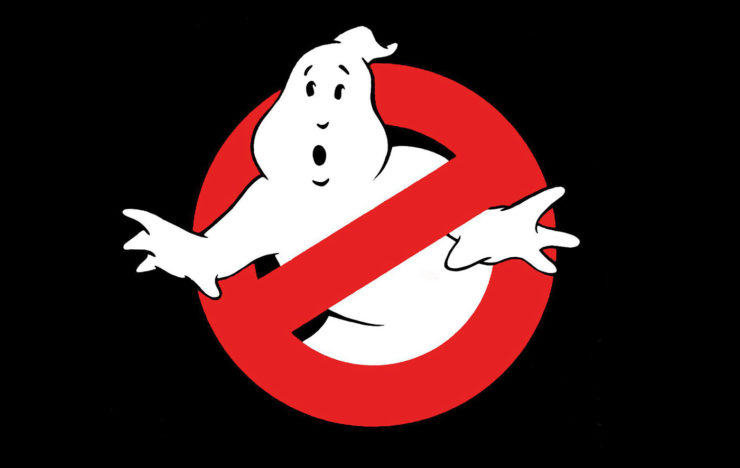
I’m only now starting to read the work of Mark Fisher, an English critic and cultural theorist who passed away in 2017. I became struck by his notion of hauntology, an idea that originated in Jacques Derrida’s Specters of Marx, and which I’ll probably butcher here. A pun on “ontology,” the study of being and existence, hauntology broadly examines past things that no longer exist but persist in the present as a presence. Ideas as ghosts. (Why is it that so much continental philosophy is rooted in word play?)
One facet of Fisher’s hauntology is rooted in the feeling that the art of the present seems to have stalled in the late 20th century. In the Film Quarterly piece “What Is Hauntology?”, Fisher notes how electronic music of the 2000s and onwards can no longer produce sounds that seem futuristic. Electronic music is in a type of retrospection, recreating the sounds of the past in hopes of discovering a future that never happened. If we accept this idea, western politics and culture in the 21st century are caught in a kind of inescapable time loop, with no possibilities but the continuation of capitalism as we know it, and media that is only recursive rather than innovative.
Even though my understanding of hauntology is shaky, it applies to this glut of reboots and legacy sequels and remakes. Studios want to harness the biggest built-in audience they can, which is why they hope to mine nostalgia for all it’s worth, and make a killing on opening weekend. It’s why every Ghostbusters movie is just a variation on the plot of the original Ghostbusters, and why Netflix released a live-action Cowboy Bebop that’s a wan substitute for the original anime, and why there’s a Space Jam 2 that feels like a continuation of Ready Player One, and why, in the end, the new Star Wars trilogy couldn’t imagine a story that wasn’t about family bloodlines. No respite, only repeat. Sisyphus. Prometheus. Groundhog Day.
(While writing “hauntology” in this piece on Ghostbusters: Afterlife, the autocorrect on my laptop changed the word to “tautology,” which is essentially saying the same thing twice. How fitting.)
There are only two stories: 1) nostalgia, and 2) exploiting nostalgia.
Then it’s not the past
I yearn for, but the idea
of a time when everything important
has not yet happened
— “The Uses of Nostalgia,” Lawrence Raab
Again, we come back to our individual relationships with nostalgia. What do you see when you see nostalgia deployed in this way and on this scale?
Some see a love letter to fans, as if companies penned missives with sincerity. When corporations do write love letters, though, they’re usually addressed to the corporation itself, a romanticization of intellectual property that can wind up looking like this:
To be fair: love letters can be very, very embarrassing.
Rather than love letters, I see commercials to Gen-X’ers and elderly millennials (like me) who are now parents (like my brother), and who have subjected their children to the pop culture from generations past; and who thirst for Ecto Cooler because that sweet citrus blend reminds them of a simpler time, the flavor of childhood, before all of the unavoidable difficulties, heartbreaks, disappointments, and obligations that followed.
There’s nothing wrong with revisiting fond memories, nor is there anything wrong with wanting to share some fraction of those emotions with the people we love. Sometimes we can only do that through an intermediary, like a book or song or movie; or through recipe cards, and photos, and tchotchkes, like the materials are imbued with the last traces of life lived and feelings felt. The moments are gone, but we are haunted.
Nostalgia felt like an essential coping mechanism throughout the thick of the pandemic; it continues to feel so now with that looming sense of additional environmental catastrophes, of more political tumult, of yet another long winter. The worrying thing (to me, at least) is the inability to leave this backward-facing mindset.
There are only two stories: 1) “For Harold,” and 2) the CGI recreation of a dead person’s likeness.
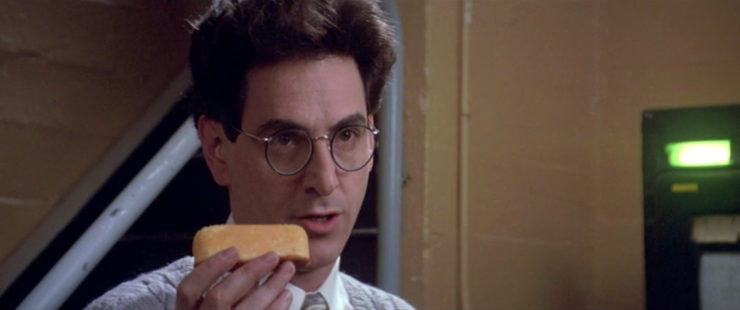
The final 30 minutes or so of Afterlife is basically the climax of the original Ghostbusters. Gary is the new key master, and a Walmart is where he does a version of the Tavern on the Green scene. Phoebe’s mom, Callie (Carrie Coon), is the new gatekeeper, and she wears Sigourney Weaver’s orange dress. Why? Because Sigourney Weaver wore an orange dress. They turn into demon dogs. Olivia Wilde shows up as Gozer. The original Ghostbusters make cameos and repeat their catchphrases. They cross the streams.
If you’re like me, this stretch of the movie is tedious, creatively bankrupt, and maybe even a little sad. Rather than feeling moved by all this nostalgia, I felt bludgeoned and schmaltzed. Also bored and pretty tired.
And then a blue CGI ghost of Harold Ramis appears.
They tease Egon’s invisible presence throughout the film, but to see a digital likeness of Ramis mutely saving the day felt manipulative, even ghoulish. Ramis’ estate had to have cleared it, but I’ve become disillusioned by the CGI-ing dead people. This feels less like movie magic and more like corporate necromancy. Just let the dead rest.
Afterlife strives for big emotions about family and legacy, but for me it felt like a copy of those feelings. Even the reunion between Phoebe’s mom and the estranged Egon just feels forced since their relationship is dealt with in shorthand. I wished half of the Easter eggs and callbacks and scene recreations could be traded in for more time with the Spengler family, Gary, Podcast, and Lucky doing their own thing, telling their own story, and not just trapped in this eternal cycle of Ghostbusters.
There are only two stories: 1) the past as product, and 2) memories as fuel.
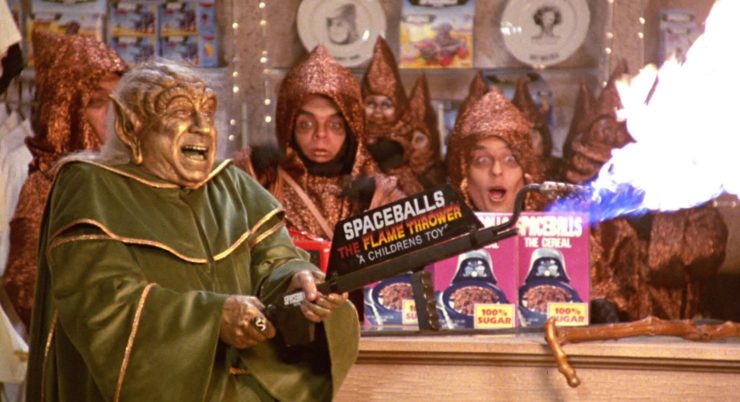
I think what irks me about the flood of references to Ghostbusters throughout Afterlife is that they feel like an ad for Ghostbusters in a Ghostbusters movie. To put it another way, a crummy commercial. Son of a bitch. And I guess I’m also irked that despite glimmers of a new story and new ideas, the franchise turns in on itself, and does so cannibalistically rather than introspectively.
I might have been more receptive to all these callbacks if they were reinterpreted or reimagined in some way, or if Afterlife drew from a richer pool of influences rather than Ghostbusters and recent trends in legacy-sequel storytelling. I’m reminded, conversely, of this Martin Scorsese clip that made the rounds on my Twitter feed about a month ago.
Genuinely want to watch every Scorsese movie where he interrupts every few seconds to tell me where the shot originally came frompic.twitter.com/40K9nGRmsX
— John Frankensteiner (@JFrankensteiner) October 18, 2021
That’s the infectious enthusiasm of someone sharing their memories, and using other work as something generative. There’s a key distinction between Scorsese’s frequent evocations of Powell and Pressburger compared to the constant Ghostbusters-ing of Afterlife, and it’s not just that he’s drawing from a deeper well of history and a wider range of influences. Notice how these references to the past manifest themselves. “They aren’t direct references to the movies they’re inspired by,” Scorsese clarifies, “but they’re kind of a fuel, in a way, that spurs my imagination to move a little further.”
In the love of something past, a spark for the future.
There are only two stories: 1) everything’s been done before, and 2) no it hasn’t.
Afterlife just reaffirms my desire something different and new in blockbuster entertainment, which makes me a sour-pussed Sisyphus for going to the movies with high hopes. (Still, fingers crossed for The Matrix Resurrections, which seems like a sequel as New Game+.)
It’s funny in some ways that big budget escapism plays it all so safe, making escape something that feels mechanical. But maybe I don’t just want an escapism that distracts. Maybe I want something that makes me think more about escapology, the art of escaping. I’ll probably find that in smaller films, and in books, and in comics, and in thoughtfully made video games, and in media from other countries with their own narrative traditions that are new to me.
I want stories that give me a sense of new possibilities, not just the choices that have already been made in shapes that have already been formed. I want to know what other people do when they play make believe, younger people especially, not adults my age who feel oddly compelled to keep dreaming the same dream. (What a nightmare.)
I want the future, even lost futures or imagined futures. I want to bust the fuck out of the 20th century already.
There are only two stories: 1) “I looked at the trap, Ray,” and 2) “See you on the other side, Ray.”
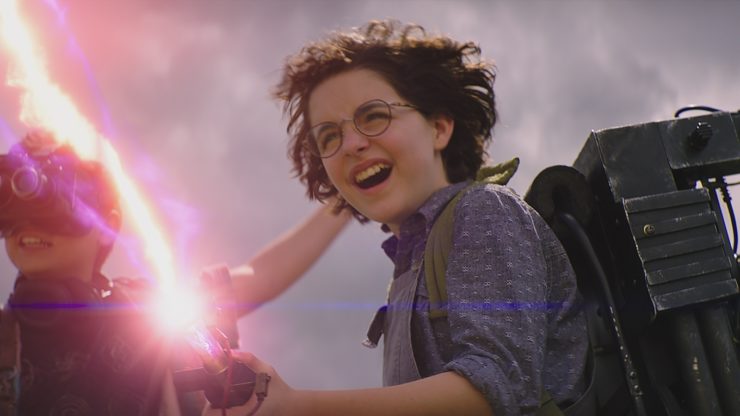
Kids will see Ghostbusters: Afterlife, and maybe other Ghostbusters media, and they’ll play Ghostbusters. And in their play (at least this is what I hope), they won’t just recreate what they saw but make it their own. They’ll see themselves in Phoebe and Podcast, and then slot themselves into the crew with their own quirks as a new character. And by imagining themselves in the loose skeleton of a story, they might make something new in the process.
The future is always going to be fueled by the past, even a crummy refurbished past, and it’s bound to set someone’s imagination in motion. Because there has only ever been two kinds of stories: the ones we are told, and the ones that we get to tell.
Beyond that reductive oversimplification, the possibilities are endless.
Hubert Vigilla is a Brooklyn-based writer whose fiction has appeared in The Normal School, No Tokens, Territory, and elsewhere. You can follow him on Twitter.










